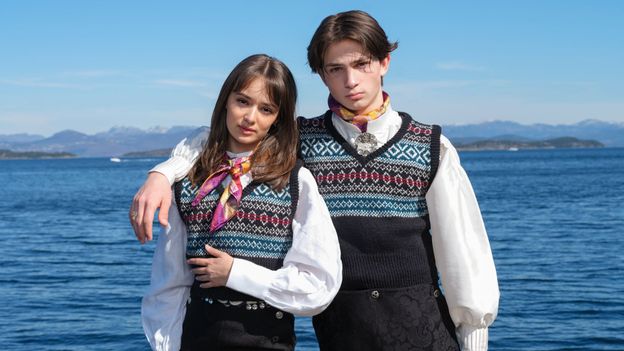
During the p andemic, Skaar pondered the situation. “I thought, ‘I can make up my own style – that’s something I’ve done my whole life’.” After combining the original female shirt with masculine trousers, they re-purposed an original piece of their bunad jewellery into a pocket-watch chain. “From a distance, the outfit looks more masculine – and that is how people see me. Maybe when I’m richer I can add more details. The skirt of my old women’s bunad had embroidery of birds and nature. I’d like to move that to my new vest.”
At the end of the pandemic, as Norwegians were told to avoid big crowds, Skaar tried out the new bunad in smaller groups. Then, on the Norwegian independence day last year, they wore it out and about. “By then, I wasn’t nervous,” they explain. “I had already been in interviews and TV shows, and got so much positive feedback. Many people said they felt the same as me. I felt I had a responsibility to be a representation for others.”
Marianne Lambersøy is the co-owner of Embla Bunader, which sells bunads and accessories in five shops across Norway. Keen to make traditional garments accessible for everyone, Embla also offers a bunad-matching hijab. A few years ago, the company was approached by a new group of customers looking for non-binary bunad alternatives. Could Embla help?
“It was a difficult design,” Lambersøy tells BBC Culture. “I was lying awake many nights. Should I offer shorts to everyone? A skirt to everyone? A skirt that looks like a kilt?” In the end, options were given of either shorts, trousers or a skirt. Lambersøy used damask, a patterned silk fabric, for the legwear, “because everyone who knows bunad knows that is high quality” and kalemank, a woven wool, for the jacket, because it is a traditional bunad fabric, originally imported from Norwich via old Norwegian-British trade links. “It’s the finest fabric we have in Norway, it oozes quality”, she says. There is also a knitted vest in black, with patterns in the colours of the Norwegian flag: white, blue and red.